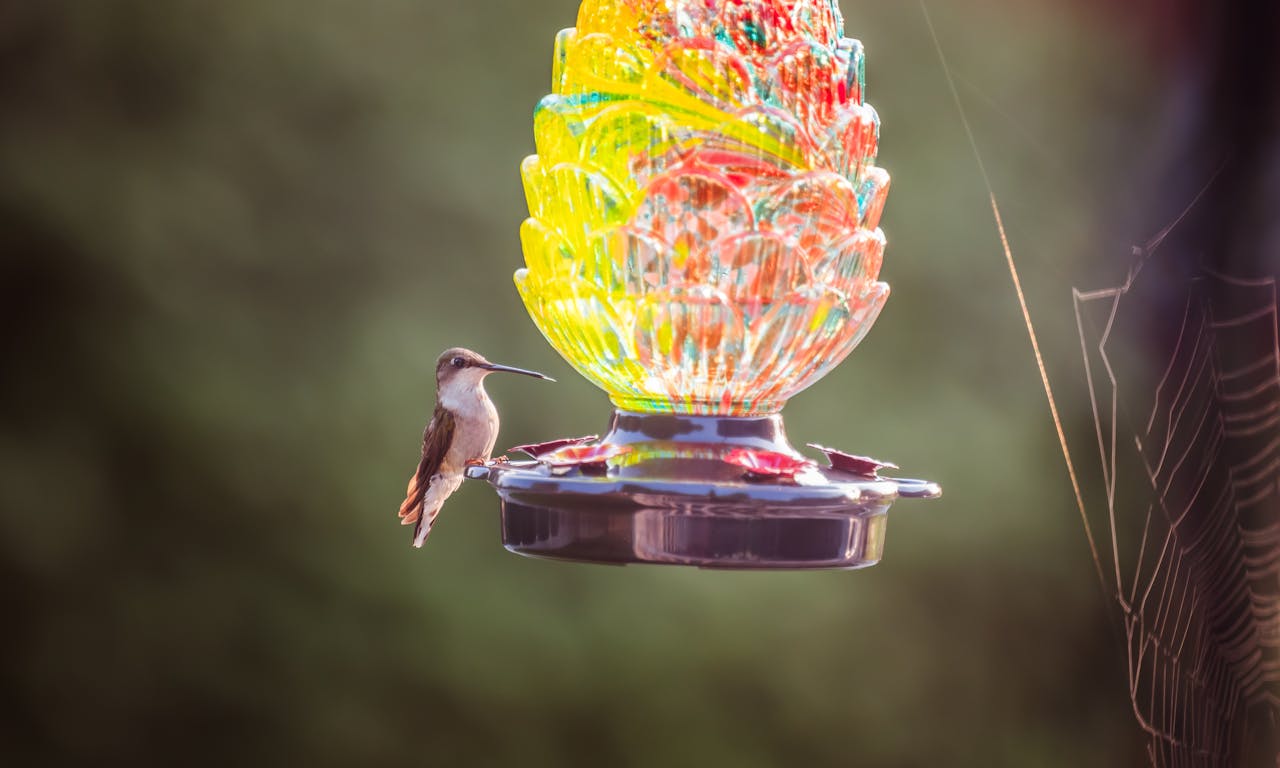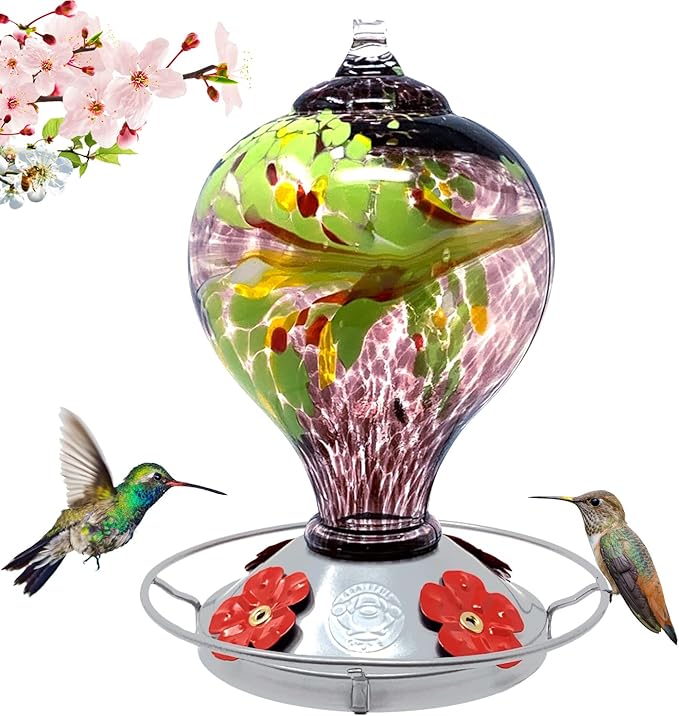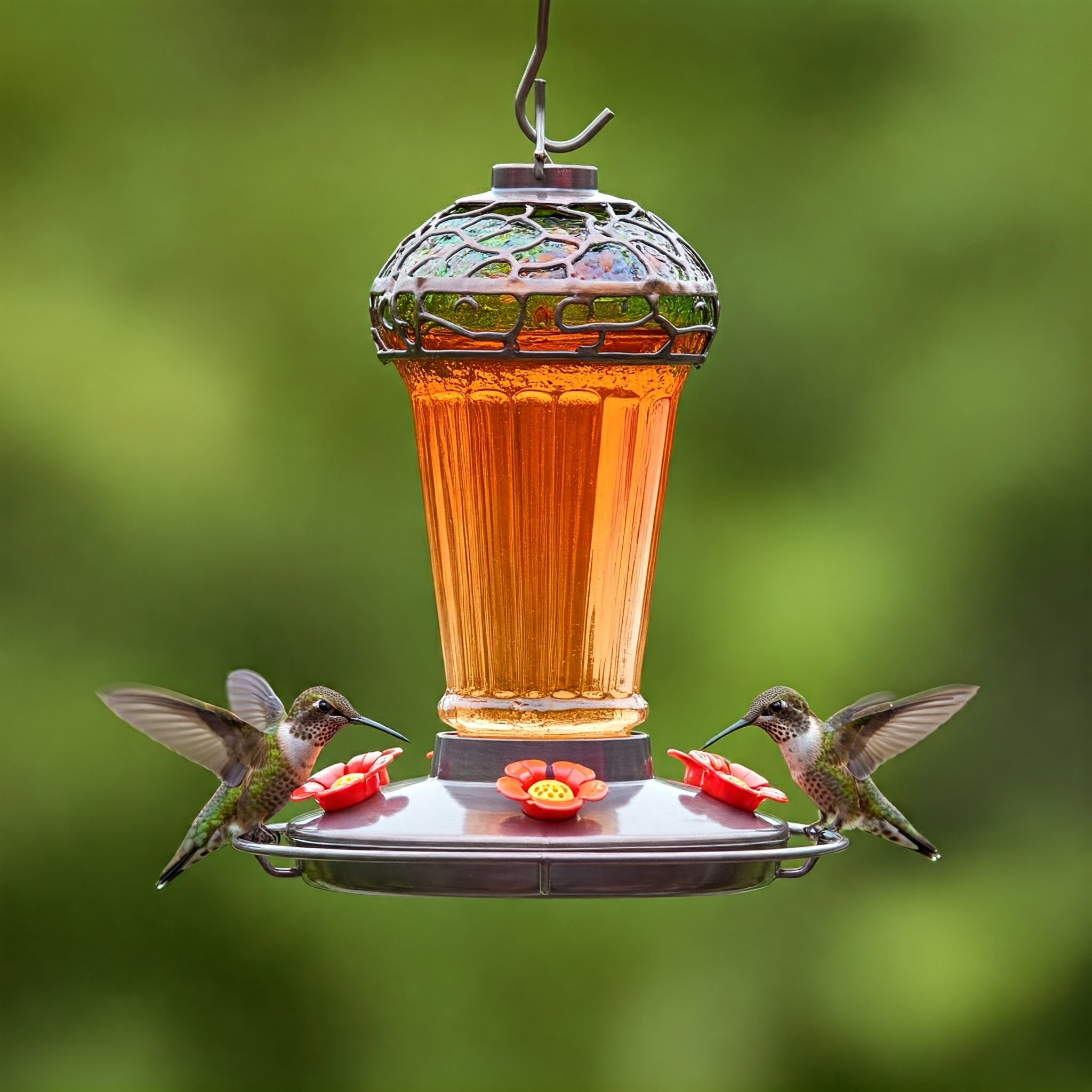- craft enchanting hummingbird havens
- What is a Hand Blown Glass Hummingbird Feeder?
- The Ancient Art of Glassblowing, Reimagined
- the beauty of hand-blown glass
- choosing the perfect hand blown glass feeder
- caring for your hand blown glass feeder
- a timeless addition to your garden
- what is the best hand blown glass hummingbird feeder?
- frequently asked questions
A hand blown glass hummingbird feeder is a treasure for bird lovers, blending exquisite artistry with essential function. Its colorful, handcrafted design not only draws in hummingbirds but also enhances any outdoor setting with its beauty. For enthusiasts, these feeders are more than bird attractors—they’re a way to celebrate the wonder of nature and transform gardens into radiant sanctuaries.
In this article, we will explore:
- what is a hand blown glass hummingbird feeder;
- the art of glassblowing and its application to hummingbird feeders;
- the beauty of hand blown glass hummingbird feeders;
- factors to consider when selecting the best hand blown glass hummingbird feeder;
- how to care for your glass masterpiece;
- answer some FAQs
What is a Hand Blown Glass Hummingbird Feeder?
A hand blown hummingbird feeder is a type of decorative hummingbird feeder that offers a captivating blend of art and function, adding elegance and allure to any garden or outdoor space. Unlike mass-produced feeders, each hand-blown piece is unique, showcasing the artistry of skilled glassblowers who use a variety of techniques to transform molten glass into stunning pieces of art.
The Ancient Art of Glassblowing, Reimagined
Glassblowing is an ancient technique that requires immense skill and creativity. For centuries, skilled artisans have practiced the mesmerizing art of glassblowing, transforming molten glass into exquisite objects.
Today, this tradition continues with the creation of hand blown glass hummingbird feeders. Each feeder is individually crafted, with a glassblower carefully shaping and blowing the molten glass into unique forms, often adorned with intricate details like delicate flowers, swirling patterns, or vibrant colors. This meticulous process ensures that no two feeders are exactly alike, making each one a truly special addition to your garden.
steps in creating a hand blown glass feeder
The process of creating a hand blown glass hummingbird feeder begins with a ball of molten glass. The skilled glassblower will use a long, hollow tube to blow air into the glass, and mold it into the desired form with specialized tools. Once the basic shape is achieved, the glassblower can add details such as flowers, leaves, and vines. This meticulous process ensures that every hand-blown glass feeder is a unique masterpiece.
| Stages | The Process |
|---|---|
| 1. Gathering and Shaping the Glass | A blob of molten glass is gathered on a blowpipe and carefully shaped into a bubble. |
| 2. Adding Colour | Vibrant hues are incorporated using colored rods, powders, or frits. Artisans blend and layer these colors to achieve stunning effects. |
| 3. Detailing | Unique patterns, such as swirls, spirals, and floral motifs, are added using delicate tools and techniques. |
| 4. Annealing | The finished piece is placed in a kiln to cool slowly, ensuring its durability. |
| Table 1 | Process of creating hand-blown glass hummingbird feeder |
the beauty of hand-blown glass
What sets hand-blown glass apart? It’s the inherent individuality. Each feeder boasts subtle variations in shape, color, and texture, ensuring no two are exactly alike.
Imagine vibrant hues of ruby red, sapphire blue, and emerald green swirling together, catching the sunlight and enticing hummingbirds from afar. These feeders are not mere vessels for nectar; they are living sculptures that add an elegant touch to any garden.
Beyond their aesthetic appeal, hand-blown glass feeders are remarkably durable. Crafted from high-quality glass, they can withstand the elements, resisting fading and cracking over time. This ensures your investment will continue to attract and delight hummingbirds for years to come.
Hand-blown glass hummingbird feeders are available in a dazzling range of shapes, sizes, and colors. Whether you prefer simple elegance or ornate beauty, there’s a feeder to match your taste and garden aesthetic.
popular designs
role of colour
Hummingbirds are naturally drawn to vibrant hues such as red, orange, and yellow, which mimic the flowers they feed on. Choosing a feeder with these colors can make your garden an irresistible haven for these feathered visitors. Beyond functionality, the radiant colors of the feeders catch sunlight, creating a luminous display that enhances your garden’s beauty.
choosing the perfect hand blown glass feeder
With a myriad of styles available, selecting the perfect hand-blown glass hummingbird feeder can be an adventure. Consider these factors to find the ideal match for your outdoor space:
| 1. Size and Capacity | Determine the appropriate size based on the number of hummingbirds in your area and how often you’re willing to refill it. Larger feeders require less frequent refills, while smaller ones offer a more delicate aesthetic. |
| 2. Shape and Design | From classic trumpet shapes to whimsical globes and elegant teardrops, the variety of designs is endless. Choose a shape that complements your garden’s style and provides easy access for the hummingbirds. |
| 3. Colour | Hummingbirds are attracted to bright colors, particularly red. However, hand-blown glass feeders offer a spectrum of hues, allowing you to select colors that complement your garden’s palette while still enticing these tiny jewels. |
| 4. Feeding Ports | Consider the number and placement of feeding ports. Multiple ports accommodate more hummingbirds at once, reducing territorial disputes. |
| Table 2 | How to choose the best hand blown glass hummingbird feeder |
caring for your hand blown glass feeder
Proper care ensures your hand-blown glass hummingbird feeder remains a beautiful and functional addition to your garden:
a timeless addition to your garden
Hand-blown glass hummingbird feeders are more than just feeding stations; they are functional art that elevates your outdoor space. Their unique beauty, durability, and ability to attract hummingbirds make them a timeless addition to any garden. By choosing the right feeder and providing proper care, you can enjoy the captivating dance of hummingbirds for years to come.
what is the best hand blown glass hummingbird feeder?
There’s no single “best” when it comes to hand-blown glass hummingbird feeders! Only a spectrum. It all boils down to your preferences and priorities. Here’s a breakdown of factors to consider, along with some popular options:
| 1. AESTHETICS | (i) Style | Hand-blown glass feeders are often chosen for their artistic appeal. Brands like Muse Garden and Grateful Gnome offer a variety of colorful and unique designs that can enhance your garden’s beauty Do you prefer a classic, elegant design, a whimsical and colorful piece, or a modern and minimalist look? Examples: Classic: Look for feeders with simple shapes and clear glass, often accented with copper or brass. Whimsical: Consider feeders with vibrant colors, unique shapes, or decorative elements like flowers or vines. Modern: Seek out feeders with clean lines, geometric patterns, and bold color combinations. |
| (ii) Colour | Does your garden have a color scheme you want to complement? Some feeders come in a variety of colors, while others feature intricate multicolored designs. | |
| 2. FUNCTIONALITY | (i) Capacity | Hummingbird feeders come in various sizes, typically ranging from 8 to 40 ounces. If you have a high number of hummingbirds visiting, a larger capacity feeder like the LUJII Hand Blown Glass Hummingbird Feeder (36 ounces) might be suitable. For fewer visitors, a smaller feeder such as the Muse Garden Hand Blown Glass Hummingbird Feeder (27 ounces) could suffice |
| (ii) Feeding Ports | More feeding ports can accommodate multiple hummingbirds simultaneously. For instance, the Grateful Gnome Hand Blown Glass Hummingbird Feeder offers five feeding ports, allowing several birds to feed at once. How many hummingbirds do you want to accommodate at once? More ports mean less competition and more birds enjoying your feeder. | |
| (iii) Ease of Cleaning | Regular cleaning is essential to prevent mold and fermentation. Feeders with wide mouths or those that disassemble easily, like the Muse Garden Hand Blown Glass Hummingbird Feeder, facilitate thorough cleaning. Look for feeders that are easy to disassemble and clean, with wide openings and removable parts. | |
| (v) Durability | While glass is beautiful, it can be fragile. Consider feeders with thicker glass or protective elements to minimize breakage risk. | |
| 3. FEATURES | (i) Perches | Allow hummingbirds to rest while feeding, conserving energy. |
| (ii) Ant Moats | These prevent ants from reaching the nectar, keeping it clean and safe for the hummingbirds. The LUJII Hand Blown Glass Hummingbird Feeder includes an ant moat, which can be beneficial in keeping ants away from the nectar. | |
| (iii) Bee Guards | Help deter bees and wasps, while still allowing hummingbirds access. | |
| 4. PRICE | Hand-blown glass hummingbird feeders can range from $20 to $50 or more, | Hand-blown glass feeders tend to be more expensive than mass-produced plastic ones. Determine your budget and weigh it against the desired features and aesthetics. |
| 5. OTHER FACTORS | (i) Location | Consider your local climate and whether the feeder needs to withstand extreme temperatures or strong winds. |
| (ii) Hummingbird Species | Some species might prefer certain feeder styles or colors. |
To help you narrow down your choices, consider these questions:
- What is your budget?
- What style and size best suit your garden?
- How important are features like ant moats and perches?
- How much maintenance are you willing to do?
By considering these aspects, you can navigate the spectrum of hand blown glass hummingbird feeders and find the one that best suits your needs and preferences.



